Patent MarketPlace: Sports & Sporting Goods Patents and Trademarks for Sale
 Teaching Mat for Golfers (Cho): U.S. Patent Nos. 11,745,076 plus Two Design Patents
Teaching Mat for Golfers (Cho): U.S. Patent Nos. 11,745,076 plus Two Design Patents
Golf is a $100+ billion industry and almost 50 million Americans play golf. Golfers will do anything and spend any amount of money to improve their game from live lessons from golf instructors to a variety of training tools and contraptions. But one area that has not been focused on is the mat used at driving ranges.
This patent family introduces two groundbreaking technologies – the Alignment Template System and the Down-Blow Impact Guide Device System. These are features that are not available in the current generation of golf hitting mats.
The Alignment Template allows golfers to maintain a consistent swing path and setup, enabling them to visually adjust and practice various shot types such as draws, fades, and straight shots with precision. The Down-Blow Impact Guide Device provides a practical training solution for mastering the correct downward strike. Golfers can practice using the Insert Flat Mat for normal sessions, and easily replace it with the Insert Down-Blow Impact Guide Mat when focusing on impact training. This dual-insert system enables step-by-step learning, allowing players to develop proper swing mechanics and impact consistency while using a single integrated training platform.
U.S. Patent Nos. 11,745,076 “Golf mat that induces a down blow impact zone swing” plus U.S. Design Patents D989,207 and D,1006,936 would enable any manufacturer of golf equipment to introduce a personal teaching mat for golfers and a commercial product for golf clubs and driving ranges.
 Baseball and Softball Catcher Trainer (Gilardo): U.S. Patent No 11,135,491
Baseball and Softball Catcher Trainer (Gilardo): U.S. Patent No 11,135,491
After the pitcher, the catcher is the most important player in baseball or softball. Learning how to receive the ball properly is challenging in itself. Knowing when and how to properly block a ball is what takes a catcher to the next level. There is a significant degree of hand-eye coordination needed to catch a ball coming at you at 90 miles per hour. It is not a skill set that comes naturally. It has to be taught and learned. What if there were a way to automate that training?
That is exactly what this patent does. It creates a catcher training tool for baseball and softball catchers – building their muscle memory to learn how to block properly. It is a three-piece configuration – face mask, wrist strap, and self-locking retractable blocking device that attaches to the foot. The device helps fix the two most common blocking flaws in catchers – pulling their heads out and not getting their glove to the proper location between their knees. The face mask piece helps keep the head down during blocks – building confidence by using the gear properly and preventing possible injury such as getting hit in the neck. The blocking unit locks the user into the proper blocking position once he or she gets his or her glove to the right spot – down and deep between the knees A training device based on this patent has been proven effective as the inventor has been manufacturing and successfully selling a product based on the patent. He is now prepared to sell or license the patent to a business that can scale up sales of the device.
U.S. Patent No 11,135,491 for a “System for training baseball catchers” would enable any manufacturer of baseball and softball equipment to introduce a proven training device for catchers to its customers and its competitors’ customers.
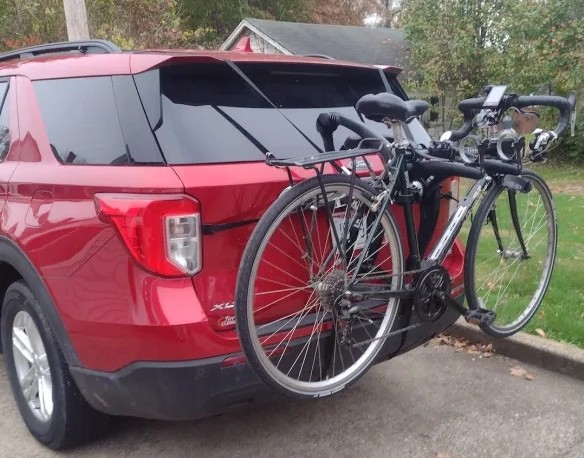 Improved, Multi-Use Bike Rack (Foley): U.S. Patent No. 10,046,712
Improved, Multi-Use Bike Rack (Foley): U.S. Patent No. 10,046,712
First there was the bicycle, then the automobile, and then the bike rack mounted on the back of automobiles. There have been no significant improvements to the bike rack in 50 years, and virtually all the bike racks on the market today are identical to all the others. Until now.
This patent introduces dramatic improvements to current bike rack design, and it can also be used to tote other items. The bicycle rack covered by this patent has a telescopic, height-adjustable support so it can be used on any size or type of vehicle. It features an arm assembly that holds one or more bicycles, and the arm assembly is pivotably mounted to the support so it can be rotated into many positions including being stowed in a downward position or it can be pivoted rearward so multiple bikes can be carried by the arm assembly. The unit can also be used to carry folding chairs and other equipment. Unlike most bike racks, a bicycle rack based on this patent can be used on hatchbacks. If it were made of aluminum, the rack would weight just 7¼ pounds.
U.S. Patent No. 10,046,712 for a “Vehicle bike rack” would enable any bike rack or bicycle manufacturer to offer its customers base a bike rack that outperforms everything bike rack currently available.
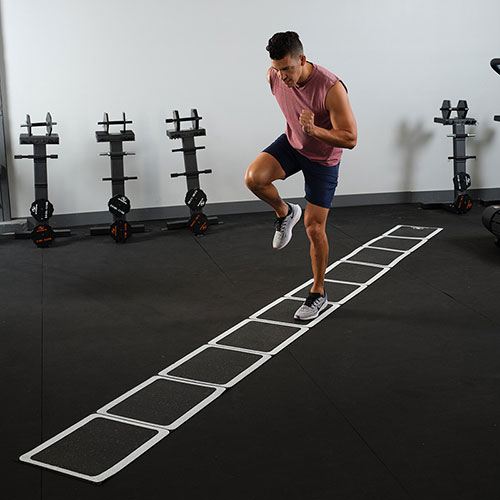 Projected-onto-the-Floor Agility Ladder with Data Collection Capabilities (Keeney): U.S. Patent No. 12,017,112
Projected-onto-the-Floor Agility Ladder with Data Collection Capabilities (Keeney): U.S. Patent No. 12,017,112
Agility ladders have long been a staple in the fitness world. They assist individuals to improve footwork, agility, quickness, and endurance; they strengthen joints, ligaments and tendons; and they improve coordination by incorporating fitness routines in which the user places his or her feet quickly and precisely within one of the squares in the ladder. Agility ladder exercise also enhances neuromuscular control and proprioception. Agility ladders are standard training tools for sports teams and for High-Intensity Interval Training (HIIT) in both individual and group settings. However, the traditional agility ladder comes with limitations such as difficulties in storing and transporting the device, tangling when folding the agility ladder after use, limitations on the length of the ladder and size of the squares, lack of ability to track data metrics, and delays in workouts due to coiling of the ladder when it is stepped on.
This patent introduces the next generation of agility ladder and the implementation of a traditional fitness tool into the smart fitness world – a digital image projected onto the floor capable of tracking and utilizing performance data. Rather than use a physical device that has to be taken out and unfolded, and then folded up and put away after each use, this patent creates an agility ladder that is projected onto the floor or any flat surface. Just turn it or when needed and turn it off when done. Schools and sports teams can use a device based on this patent to place an agility ladder at any location in the school when needed. Gyms and health clubs can just click the device ON when needed, and OFF when done, then use that space for something else while also minimizing the spread of germs through repetitive touching of a traditional physical agility ladder. Fitness classes can incorporate it into classes without risk of slowing down HIIT workouts due to coiling. Individuals can take the device with them so they can use it to exercise when traveling on business or on vacation.
U.S. Patent No. 12,017,112 for an “Agility ladder projection systems, devices, and methods” would enable any manufacturer of sporting goods or athletic training equipment to introduce an agility ladder that is super-easy to use, tracks performance data, sets up in seconds, will never coil up, no one can trip over, and cannot break!
 Early Detection of Possible Head Injury (Weaver): U.S. Patent No. 9,795,177
Early Detection of Possible Head Injury (Weaver): U.S. Patent No. 9,795,177
Roughly 3.8 million high school and colleges athletes suffer concussions each year in America. Football, hockey, and lacrosse are most prone to head injuries. However, other sports – such as basketball, baseball, and soccer that do not require helmets for their players – can be the source of serious head injuries. Left untreated, the results of a head injury can be long-term and disabling, even fatal!
This patent creates an impact-sensing device that attaches to the athlete’s headband or helmet and detects a pre-determined g-force impact to the head. It immediately uses flashing LEDs to warn the wearer and others – coaches, officials, other players, parents, etc. – that the athlete has received a head impact over the pre-determined safe level. By immediately notifying others of an impact to the athlete’s head, immediate diagnosis and, if necessary, treatment can be rendered.
U.S. Patent No. 9,795,177 for a “Head-mounted impact sensing and warning device” will enable any manufacturer of sports equipment to offer a device that will insure that athletes are aware of potential head injuries, make sure that proper attention is paid to possible head injuries, and clearly save lives!
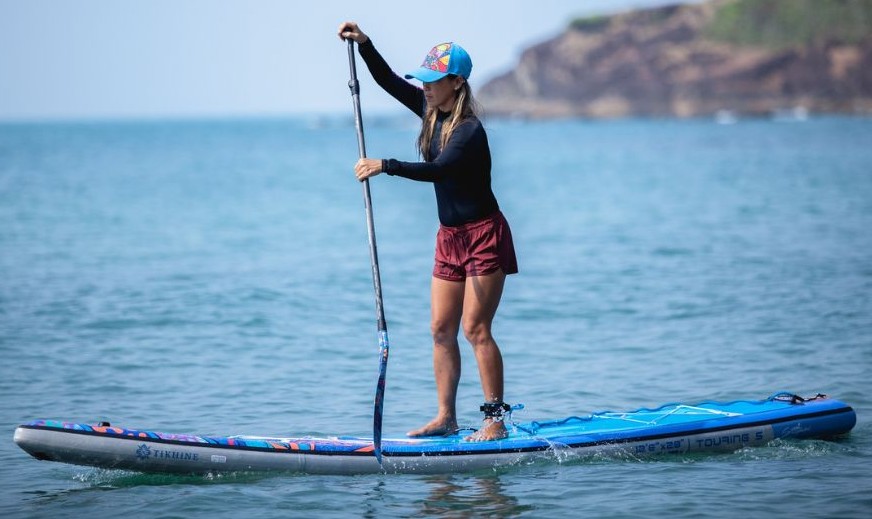 Motorized Paddleboard Oar (Webb): U.S. Patent No. 12,202,584
Motorized Paddleboard Oar (Webb): U.S. Patent No. 12,202,584
Humans have always been drawn to the water, whether for powerboating, sailing, water skiing, tubing, whitewater rafting, surfing, or – one of the fastest growing watersports activities – paddle boarding. The U.S. water sports industry generates $38 billion annually, and innovation brings new products to market that offer new and exciting experiences.
This patented invention offers an intuitive, easy-to-use, and groundbreaking way to enhance water sports by transforming any standard oar into a motorized propulsion system. Easily attachable and removable, this invention turns an ordinary oar into a battery-powered outboard motor that can be positioned behind a paddleboard, rowboat, raft, or other small watercraft. Users simply secure it to their oar, lower it into the water, activate the motor, and effortlessly glide across the surface of the water. Solving the dilemma of how and when to attach a motor to a vessel, this invention provides long-term or temporary attachment to the item every rider has in their hands already, the oar. Designed for convenience and versatility, this invention provides a seamless upgrade for paddlers seeking extra speed, more efficiency, or greater distance. The concept has already been test-marketed with overwhelmingly positive feedback, proving its potential as an exciting new product in the growing water sports industry.
U.S. Patent No. 12,202,584 for a "Detachable oar propulsion implement" presents a unique opportunity for a consumer products manufacturer to introduce and dominate a brand-new market segment in the expanding world of water sports.
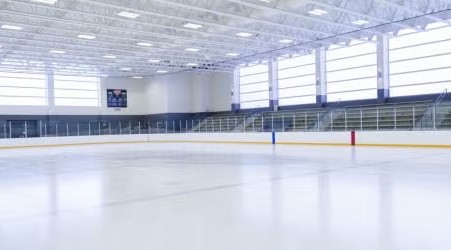 Safer Ice-Skating Rinks (Seguin): U.S. Patent Nos. 9,370,708 and 10,569,156 plus Canadian Patent 2770547
Safer Ice-Skating Rinks (Seguin): U.S. Patent Nos. 9,370,708 and 10,569,156 plus Canadian Patent 2770547
An ice-skating rink can be a dangerous place for both skaters and ice hockey players. Although dasher boards have evolved to include some level of flexibility in professional ice rinks, there remains an element of risk capable of causing serious bodily and head injury – the stanchions located at the terminal sections of the board glass. Skaters need to be shielded from these fully rigid terminations.
This patent family creates a safety component for ice-skating rinks. It consists of a body portion connectable to a transparent barrier located above the dasher boards of the skating rink, and it is capable of absorbing the impact forces of a human body. This safety component features a convex curved surface that faces the skating rink. The curved rink-facing surface has a radius of curvature suitable for redirecting impact forces away from the convex curved surface, substantially reducing injuries for hockey players and skaters.
U.S. Patent Nos. 9,370,708 and 10,569,156 plus Canadian Patent 2770547 for a “Curved safety component for a skating rink” will enable any manufacturer of ice rink components to offer a new level of safety.
 Deep Muscle Massage Tool (Thorn): Two U.S. Patents and Registered U.S. Trademark
Deep Muscle Massage Tool (Thorn): Two U.S. Patents and Registered U.S. Trademark
Sore muscles need to be massaged. Whether you work out or your muscles are sore from weight lifting, rock climbing, or other strenuous activities, those muscles need to be massaged to relieve the pain. There are massage tools that use rollers that put rolling pressure against sore muscles, and they are appropriate for sore muscles in the torso. But for sore muscles in the arms or legs, a deep muscle massage tool is needed that embraces the arm or leg and can be used standing or sitting while the muscle is idle.
This patent family does exactly that. It uses a strap that is wrapped around the arm or leg to hold the massage tool in place, and it can be quickly adjusted to any length to exactly fit the diameter of the arm or leg. A handle on the device enables the user apply a deep massage in a specific area by moving the handle back and forth to press the tip against the sore muscle and massage it. It can be used anywhere at any time while the user is sitting or standing. The inventor of this device also has a trademark – “The Muscle Masher” – for the patented invention.
U.S. Patent No. 10,342,727 for a “Method of massaging using a massage tool” and U.S. Patent No. 11,065,173 for a “Massage apparatus” would enable any manufacturer of massage equipment to introduce a new, highly effective muscle massage tool to its customer base. The acquirer of the patent family can brand the product created by the patent with its own product name, or the U.S. Registered Trademark “The Muscle Masher” is also available for acquisition.
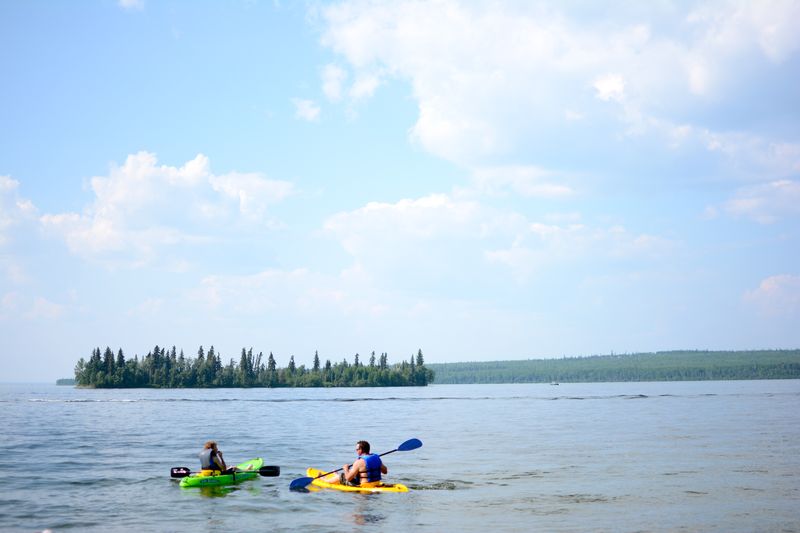 Kayak or Canoe Canopy (Adventure Canopies): Four U.S. Patents and Trademark
Kayak or Canoe Canopy (Adventure Canopies): Four U.S. Patents and Trademark
Kayaking has grown in popularity as it enables enthusiasts to explore lakes, rivers, the ocean, and low-level wet lands. Kayaks are lightweight, easy-to-maneuver, and affordable. Canoes are better for a larger group, while kayaks are better suited to just one or two. Inflatable kayaks take up very little storage room when not in use. In fact, the only downside of a kayak or canoe is that it leaves you out in the baking sun with NO shade.
This patent portfolio provides relief from that baking sun by introducing a pop-up canopy (or “Bimini top”) that attaches to a kayak or canoe in minutes. When not in use, it folds up so it uses up very little space and weighs just a pound or so. When needed, it unfolds into a canopy that hooks onto the perimeter of the kayak or canoe. It can be made in various sizes to accommodate different size kayaks and canoes, and made in a variety of colors. It can be constructed of any fabric, but canvass makes the most sense. And the support structure is a “channel rod” solution made from a flexible fiberglass.
Patent Portfolio
- U.S. Patent No. 8,757,185: Bimini tops for watercrafts
- U.S. Patent No. 10,899,418: Universal channel rod adjustable extension apparatus
- U.S. Patent No. 10,407,133: Freestanding adjustable recreational canopy
- U.S. Patent No. 11,072,396: Freestanding adjustable recreational canopy
- U.S. Trademark 6068026: Adventure Canopies
This patent portfolio would enable any manufacturer of kayaks and canoes, or of kayak and canoe accessories, to offer an affordable, practical, and highly useful product. In addition to the patent portfolio, the trademark “Adventure Canopies” is also available for acquisition.
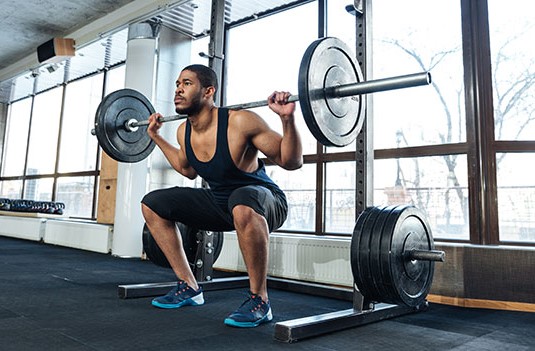 Telescoping Massage Roller (Morris): U.S. Patent No. 10,799,419 and Continuation
Telescoping Massage Roller (Morris): U.S. Patent No. 10,799,419 and Continuation
Athletes of all kinds experience micro-tears in their muscles when they work out. As those micro-tears heal, they form stronger muscles. One factor that improves that healing process is increased blood flow to the afflicted area, and massage is one of the best ways to increase blood flow. Wouldn’t it be helpful if weight lifters and other athletes could receive a massage right after a workout so they can get blood flowing to those micro-tears immediately? And also feel much better? They can.
This patent is a fundamental improvement of the traditional “foam roller” method of applying massaging force to sore and recovering muscles. Using the concept patented here, athletes – as well as the elderly and those who are injured or disabled – can more easily and more effectively “roll out” their muscles. The adjustable height and angle of the device allows the athlete to reach and massage muscles that floor-based foam rollers simply cannot reach. This patent takes well documented and proven methodology that can be seen used in every gym in America and makes it easier, more accessible, and more effective for experienced athletes and novices alike. The simple and intuitive structure means that little to no training is required to safely and effectively use this device. The massage roller is mounted on the squat rack or elsewhere – maybe a door – at home or in a gym or health club. The athlete or patient backs up to the massage roller and moves up and down and side-to-side as the roller massages his or her muscles. The unit is telescoping so it can be mounted to supports of varying widths, and it includes handles for the user so he or she can securely mount it and make adjustments in height and angle. In another version of the patent, this telescoping massage bar is a standalone device on its own frame.
U.S. Patent No. 10,799,419 and U.S. Patent Application 20200397650 for a “Telescoping massage roller and assembly of a physical fitness cage with a telescoping massage roller” would enable any weight-lifting equipment supplier to create a new market segment in the exercise equipment industry. The manufacturer can also build this device to fit onto their competitors squat racks, giving them a market entry point into established gyms that are not currently using their rigs and racks.
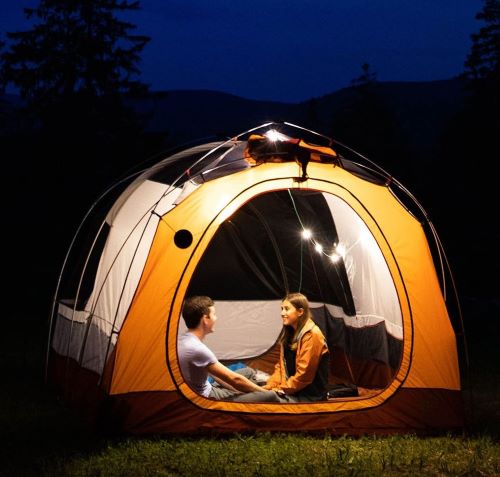 Camping Lantern with Projected Images (Zhui): U.S. Patent No. 11,435,056
Camping Lantern with Projected Images (Zhui): U.S. Patent No. 11,435,056
Camping lanterns have been around as long as there has been camping. They have progressed from kerosene to propane to electric. The latest versions use an LED lighting element. But all that camping lanterns have done for the past 200 years or so is provide light.
This invention changes that. It creates a camp lantern that not only works as a normal lantern with an opaque lens-and-cover, but also as an image projector with a quick change of the cover! Imagine children playing under a sky full of stars inside your tent? Or a psychedelic display of colors to light up your camping experience? The unit is not limited to just camping. Children can light up their rooms with a product based on this patent. What an exciting alternative to a night light? The applications are endless.
TU.S. Patent No. 11,435,056 for a “Combination camp lantern and image projector” would be a strategic acquisition for any camping lantern manufacturer ready to introduce an out-of-the-box, fun, next-generation product!
 Width-Adjustable Weight Rack (Hensler): U.S. Patent No. 10,974,091
Width-Adjustable Weight Rack (Hensler): U.S. Patent No. 10,974,091
The standard weight rack is 48 inches wide and holds barbells loaded with weights, leaving approximately 44 inches for hand placement by the weight lifter. The primary exercise movement effected by hand placement are squats. Many weight lifters – whether it's their physical size, lack of mobility, or personal preference – will place their hands as wide as possible on the barbell to perform the squat exercise. This often leads to their hands coming directly into contact with j-cups and/or the weight rack. This puts the weight lifter who requires a wide reach at a disadvantage – in fact, a dangerous disadvantage! Strangely enough, most weight racks have NO width adjustment. All users must work within the four-foot span of the weight rack. Many hand injuries have been sustained due to this limitation.
Until now. This patent creates j-cups that can be used to quickly and easily reduce the width of any weight rack from 48 inches down to 36 inches. These patented j-cups provide a six-inch offset on each side, making it much safer for weight lifters to place their hands wide on a barbell. These patented j-cups work on any weight rack, so a weight lifter can easily modify his or her existing equipment. A health club can use these patented j-cups to upgrade its weight racks to be adaptable, more convenient, and safer.
U.S. Patent No. 10,974,091 for a “Weight rack adjustment mechanism” will enable any athletic weight equipment or accessories manufacturer to offer a greater level of convenience and safety for its customers.
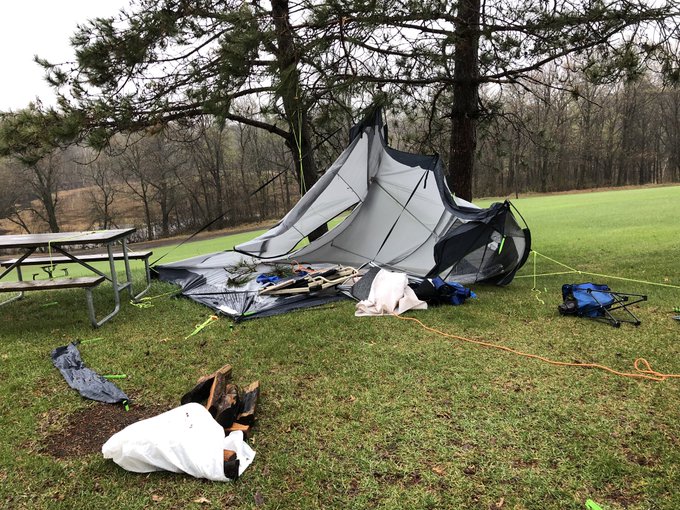 Inflatable Air Mattress and Tent (Yakubov): U.S. Patent Application 20220268050
Inflatable Air Mattress and Tent (Yakubov): U.S. Patent Application 20220268050
Tents are fun – whether it’s camping out under the stars or the kids “camping” in the back yard. Hunters and fisherman set up tents so they are ready at first light. Some people set up a tent at the beach or an outdoor event to get out of the sun for a little while. And tents are a critical element for housing victims of natural disasters. Some tents are very difficult and cumbersome to assemble, while the smaller pop-up tents are a bit easier to assemble. Tents are temporary structures, and not meant for harsh weather conditions. Until now.
This patent application takes tents to the next level by creating both an air mattress and a tent as a single structure that is inflatable. No rods or poles or supports to figure out or attach or assemble. Just pump air into the unit, and when it is fully inflated you have an air mattress with a pillow and a tent covering it in one seamless, water-tight structure. It is available in different configurations and can include screen windows with flap covers. Larger units can include rectangular bars for added rigidity. This patented technology can be used to create a tent for serious or backyard camping, hunting, fishing, and mountain climbing that inflates and is ready to use in minutes anywhere. It can be used to house disaster victims or by the military. When not in use, it deflates and is lightweight, compact, easy-to-store, easy-to-transport, and easy to inflate and use again whenever needed.
U.S. Patent Application 20220268050 for a “Inflatable air mattress tent assembly” would enable any tent manufacturer to leapfrog the technology of all of its competitors and offer a next-generation tent that is lightweight, durable, versatile, user-friendly, affordable, and practical.
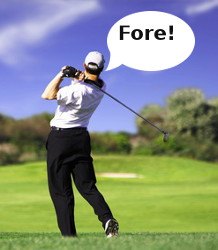 Improved Golf Club Head for Longer, Straighter Drives (Blowers): International Patent Portfolio
Improved Golf Club Head for Longer, Straighter Drives (Blowers): International Patent Portfolio
Golfers spend years working on their drive, hoping to gain just a little more distance and a little more accuracy so that initial drive will put them closer to the green. A successful drive is the combination of the golfer’s skill and the golf club itself. Wouldn’t it be great if there was a spring-loaded golf club head that met USGA standards, but also gave the ball that extra umph when the club head hit it?
There is. This portfolio covers a hollow golf club head that is filled with compressed gas. When the club head strikes the ball, the compressed gas is further compressed, but then as it returns to its original compression, it gives the ball that extra umph it needs to go farther and straighter. Drive after drive after drive. Fore!
Patent Portfolio
- U.S. Patent No. 8,663,026: Golf club having a hollow pressurized metal head
- U.S. Patent No. 9,555,293: Golf club having a hollow pressurized metal head
- European Patent 2117653: Golf club having a hollow pressurized metal head
- Korean Patent 101399497: Golf club having a hollow pressurized metal head
- Chinese Patent 101657240: Golf club having a hollow pressurized metal head
- Japanese Patent 5335695: Golf club having a pressurized hollow metal head
- Australian Patent 2008213680: Golf club having a hollow pressurized metal head
- Canadian Patent 2677358: Golf club having a hollow pressurized metal head
This international patent portfolio provides patent protection for a pressurized gas-filled golf club head on four continents. Third-party testing of the golf club showed narrow dispersion when the ball is struck from slightly different angles. The golf club manufacturer that acquires this portfolio will be able to leapfrog the technologies of all of its competitors.
 Golf Swing Trainer (Watanabe): U.S. and Japanese Patents
Golf Swing Trainer (Watanabe): U.S. and Japanese Patents
What does every golfer really want? Magic golf club? Super golf balls? Not really. What every golfer really wants is a better golf swing. A swing that drives the ball straight down the fairway and onto the green. That’s all. What every golfer really wants is a trainer that keeps his or her arms at exactly the correct position through the entire swing. Not a golf pro to provide criticism – but a trainer to make every swing just right.
This patent family does exactly that by controlling the grip angle created by the arm and golf club shaft! It includes a pair of arm tightening bands (one for each arm), a fastener that ties them to the golf club, a grip angle that is between the left arm, right arm, and the longitudinal length of the golf club, and a string-like member that is attached to the arm tightening bands and restricts the distance between the left and right elbows of the golfer. This invention keeps the golfer’s arms at exactly the right distance from each other through the entire swing, ensuring a more accurate drive! The golfer wears the device while practicing drives to orient his or her arms to the correct distance from each other.
The U.S. and Japan are the two largest markets for golf, so this patent family includes U.S. Patent No. 11,291,903 and Japanese Patent 6644387 for a “Golf swing training tool based on grip angle control” as well as PCT Patent Application 2020152877. This portfolio would be a strategic acquisition for any golf equipment manufacturer or supplier of gold training products.
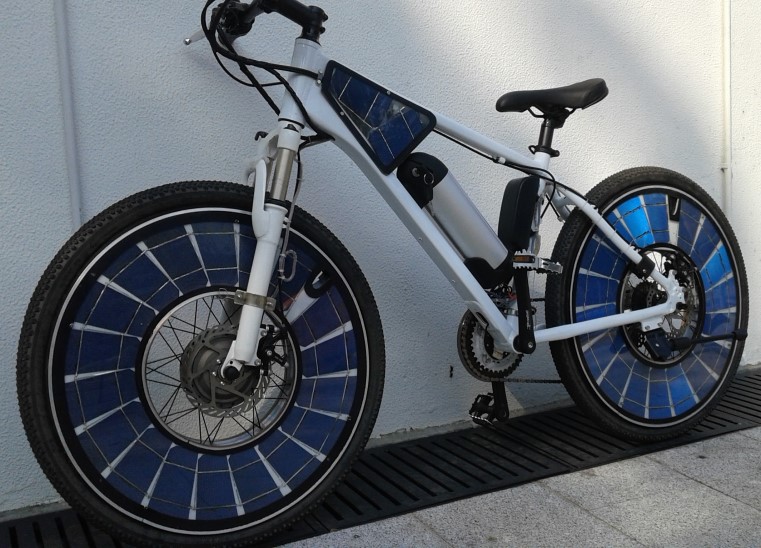 Solar Powered Electric Bicycle (Lee-Pienkowski): U.S. Patent No. 8,674,571
Solar Powered Electric Bicycle (Lee-Pienkowski): U.S. Patent No. 8,674,571
Bikes are great fun for people of all ages. And in the bicycle industry, electric-powered bicycles (or “eBikes”) are the fastest growing segment. eBikes have electric motors that assist the bicyclist, especially on uphill stretches, from either pedal or handlebar-based thumb controls. However, in order to have your electric bicycle assist at all, the batteries have to be charged. And that means someone has to remember to plug the eBike in at night so it is fully charged in the morning.
Wouldn’t it be great if you did not have to charge your eBike? The invention covered by this patent adds solar panels to the wheels of the eBike, and those photovoltaic cells directly power the electric motor on the bicycle. So, as long as the sun is shining, electrical current is being fed to the bike’s electric motor, assisting the bicyclist. The photovoltaic cells that power the electric motor are rigidly connected to the rotatable element that houses the cells, and the axial shaft is rotatably connected to the electric motor and rigidly connected to a support structure of the rotary object.
U.S. Patent No. 8,674,571 for a “Solar powered wheel apparatus” will enable any eBike manufacturer to offer the next generation of electric bicycles!
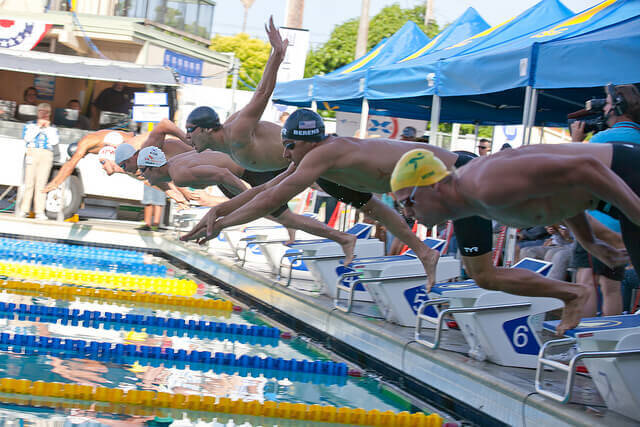 Visible Race Start Signal (Santino): Two U.S. Patents
Visible Race Start Signal (Santino): Two U.S. Patents
On your mark, get set, go! And a whistle or gunshot starts the race. But what if the swimmer or runner cannot hear the whistle or gun shot? What if he or she has limited hearing, or it’s just too noisy in the arena or gymnasium? There must be a better way to notify swimmers and runners of the start of a race that is effective, fair to all, affordable, and easy to implement.
There is. This portfolio includes a patent that covers technology for light bars that shift through multiple colors – the first tells the athletes to get ready, the second to take their places, and the third to GO! – so all the runners or swimmers are notified at exactly the same time. In a swim meet, a fourth color can be used to aid officials in determining legal turns, exchanges, and finishes. One is mounted at each start point so each runner or swimmer knows the start of the race at exactly the same moment. Auto races have used a similar system for years to communicate with drivers since a whistle or gunshot cannot be heard over the revving engines. There is a second patent for an underwater lap light that notifies swimmers of the last lap in a race.
U.S. Patent No. 10,685,539 for a “Last lap light with extendible pole” and U.S. Patent No. 11,013,977 for a “System and method for athletic competition signaling” would be a critical acquisition for any company supplying competitive sports products and accessories. The system has been approved for use by most athletic organizations including a recent rule change by the NCAA. All the engineering and design work has been done, manufacturing and sales of products have begun, and there are working prototypes, so the company that acquires this technology can go to market with a product line very quickly.
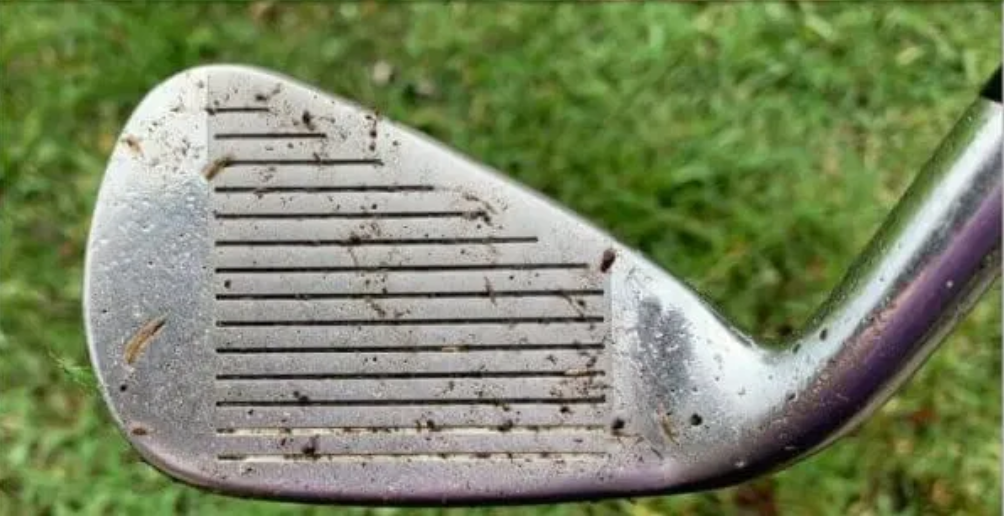 A Better Golf Club Cleaner (Loftus): U.S. Patent No. 10,258,847
A Better Golf Club Cleaner (Loftus): U.S. Patent No. 10,258,847
Every golfer knows that he must keep his golf clubs clean. Dirt on the surface of the golf club head – especially dirt in the grooves – interferes with a clean strike of the ball. And let’s face it. Every golfer will do whatever she can do to improve her game! Some golf clubs offer buckets of soapy water that the golfers can dip their clubs into, but they do not really do a very effective job of really cleaning the head of the club. What is needed is a compact, affordable, and effective device that will quickly and thoroughly clean golf club heads.
That is exactly what this patent does. It creates a compact device with a cover into which the head of the golf club is inserted, and a combination of soapy water and brushes cleans the golf head. When the golf club is removed, the cover retracts so the water in the device stays clean and does not collect dead bugs and other debris. This patent can be used to create a commercial product for use by golf courses and driving ranges, or a consumer product for personal use. U.S. Patent No. 10,258,847 for a “Golf club cleaning device and method of use” would be a strategic acquisition for any business that is currently supplying products to the golfing community and is looking for a new product category with patent protection through 2036!
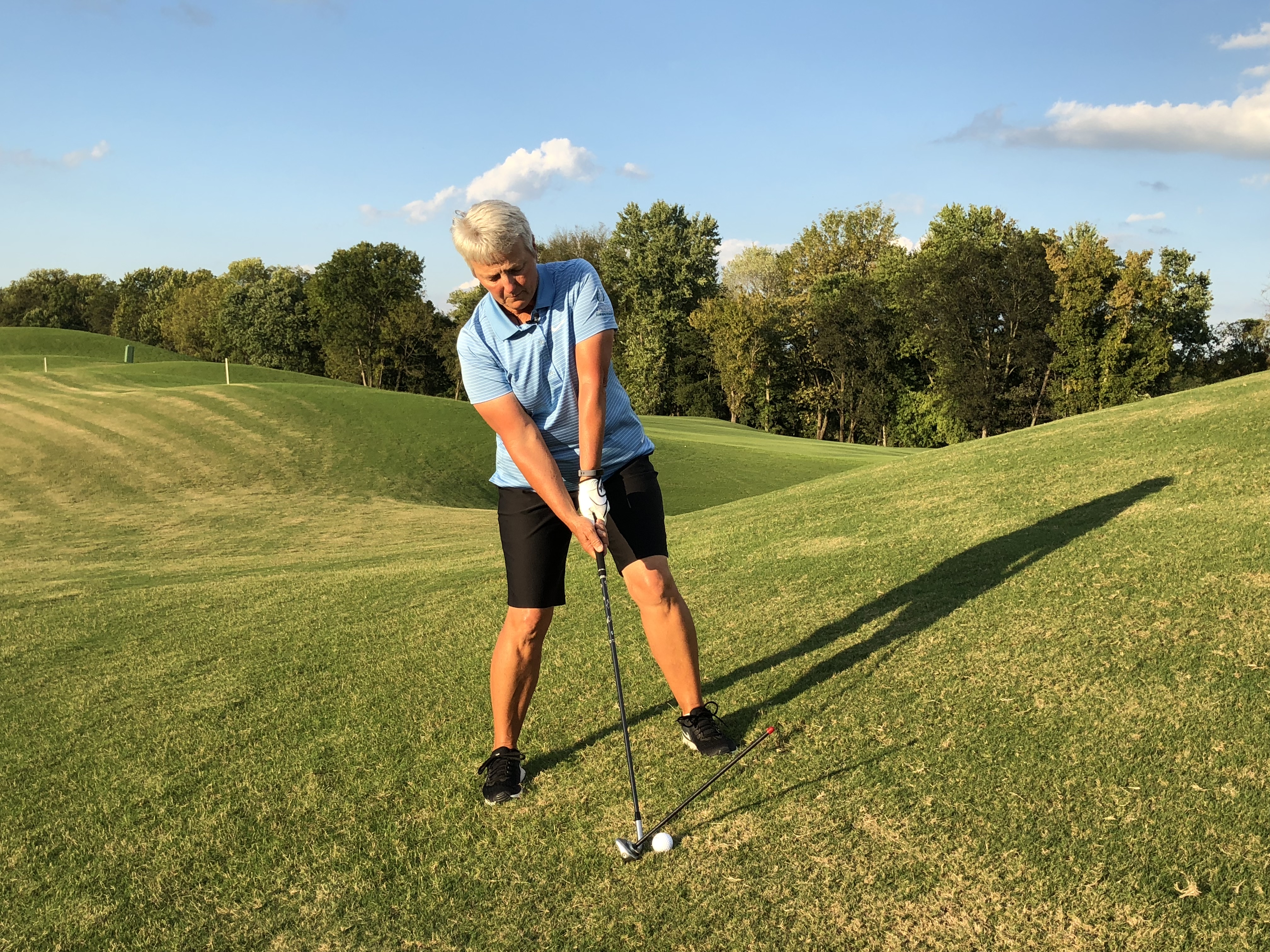 Multi-Terrain Golf-Swing Practice Surface (Loftus): U.S. Patent and Trademark Application
Multi-Terrain Golf-Swing Practice Surface (Loftus): U.S. Patent and Trademark Application
When a golfer practices his swing at a drive range there is just one major drawback: The driving range surface is flat. That would be ideal practice if all the courses he played were also flat, but that’s not the case. For truly effective golf-swing practice, a golfer needs to practice on all of the types of surfaces she will be playing on – uphill, downhill, across the upside of a hill, and across the downside of a hill.
This patent addresses exactly that need. It creates a golf-swing practice surface that simulates all the lies a golfer faces – hitting downhill or hitting uphill, and hitting across the upside or, or hitting across downside, of an incline. The device has a base area that is lower than the perimeter sides that slope up from the base, creating a flat surface surrounded by four sloping surfaces. The Field Fairway, a brand the inventor created for the product derived from this patent, can be used in the golfer’s backyard to simulate hitting balls in the rough. U.S. Patent No. 10,786,723 for a “Golf practice device, and method of practicing golf swings by hitting golf balls from replicated sloping topographical conditions, which includes side-hill lies, up-hill lies and/or down-hill lies, encountered on a golf course, off of a simulated fairway and/or a simulated rough” gives any company selling golfing products the ability to introduce a totally new product concept with patent protection for the next 18 years! Also available for acquisition is U.S. Trademark Application 88680435 for “The Field Fairway.”
Patent Brokerage Prospectus: Contact [email protected] to receive an analysis of each portfolio that includes:
- Executive Summary
- Patent Overview and History
- Technology and Investment Summary
- Market Research
- Company Analysis
- Illustrative Evidence of Use (if applicable)
We offer patents in these technologies:
- Agricultural
- Artificial Intelligence
- Automotive/Vehicular
- Aviation
- Banking/Financial Services
- Beverages/Foods/Nutritional Products
- Boat and Marine
- Cannabis and Medical Marijuana
- Construction/Building Trades
- Consumer Electronics
- Consumer Products
- Digital Currency/Cryptocurrency
- Drones/UAVs
- E-Cigarette & Vaping Technology
- E-Commerce
- Education & Training
- Energy/Power Generation
- Health and Beauty Products (HBP)
- Human Resources
- IoT Patents/Internet of Things
- Manufacturing
- Medical Electronics and Devices
- Mining/Drilling
- Mobile/Wireless
- Network/Location-Based Services
- Optics/Displays/Video/LED
- OTT Patents/Over-the-Top
- Packaging
- PCs and Notebooks
- Pharmaceuticals
- Robotics/Automation
- Semiconductor
- Shoe & Apparel
- Smart Home/Smart Office
- Social Media
- Software, Apps, and Architecture
- Sports/Sporting Goods
- Telecommunications/IP Telephony
- Warehousing/Material Handling
- Other
- Go to Patent Index
- Return to Patent MarketPlace




